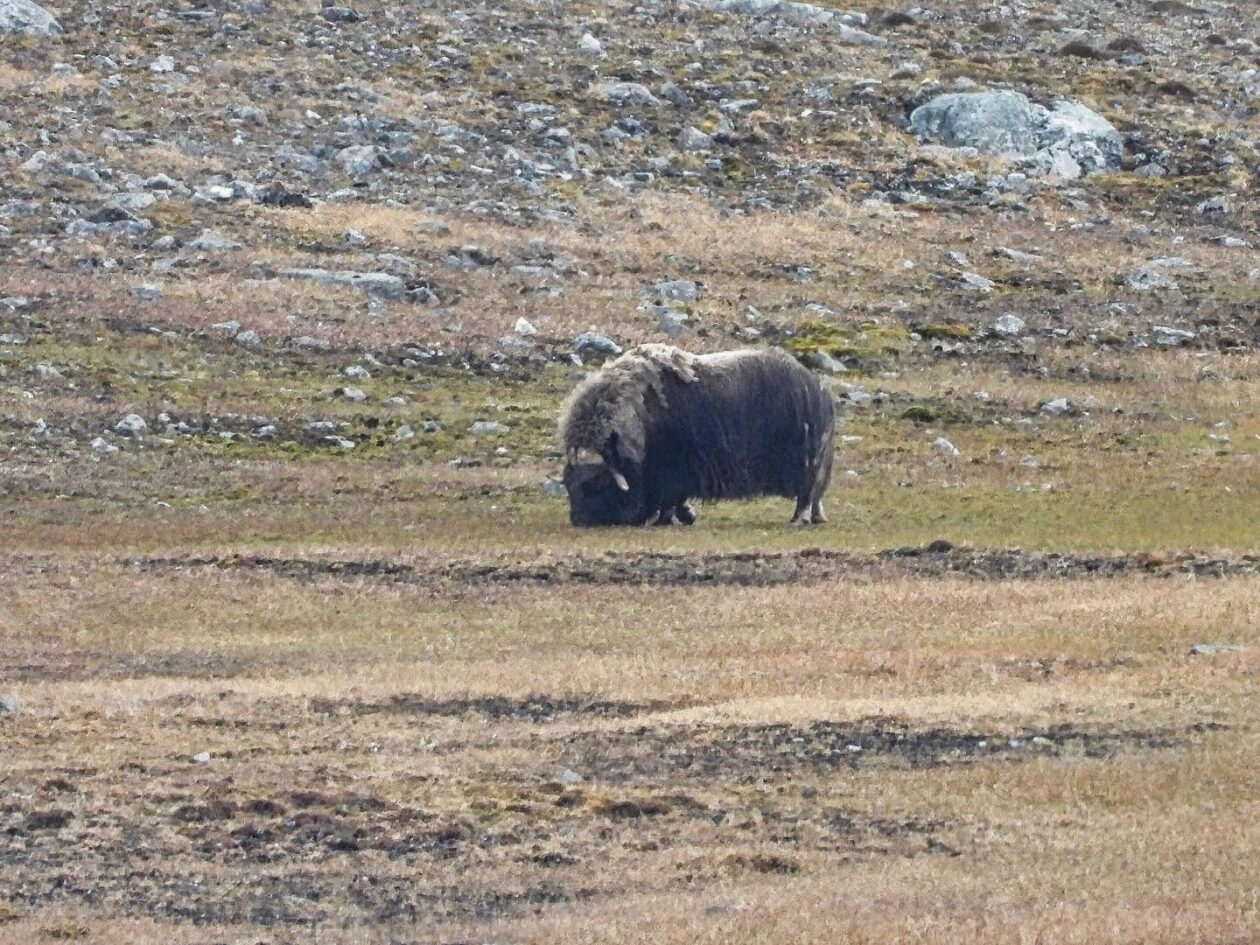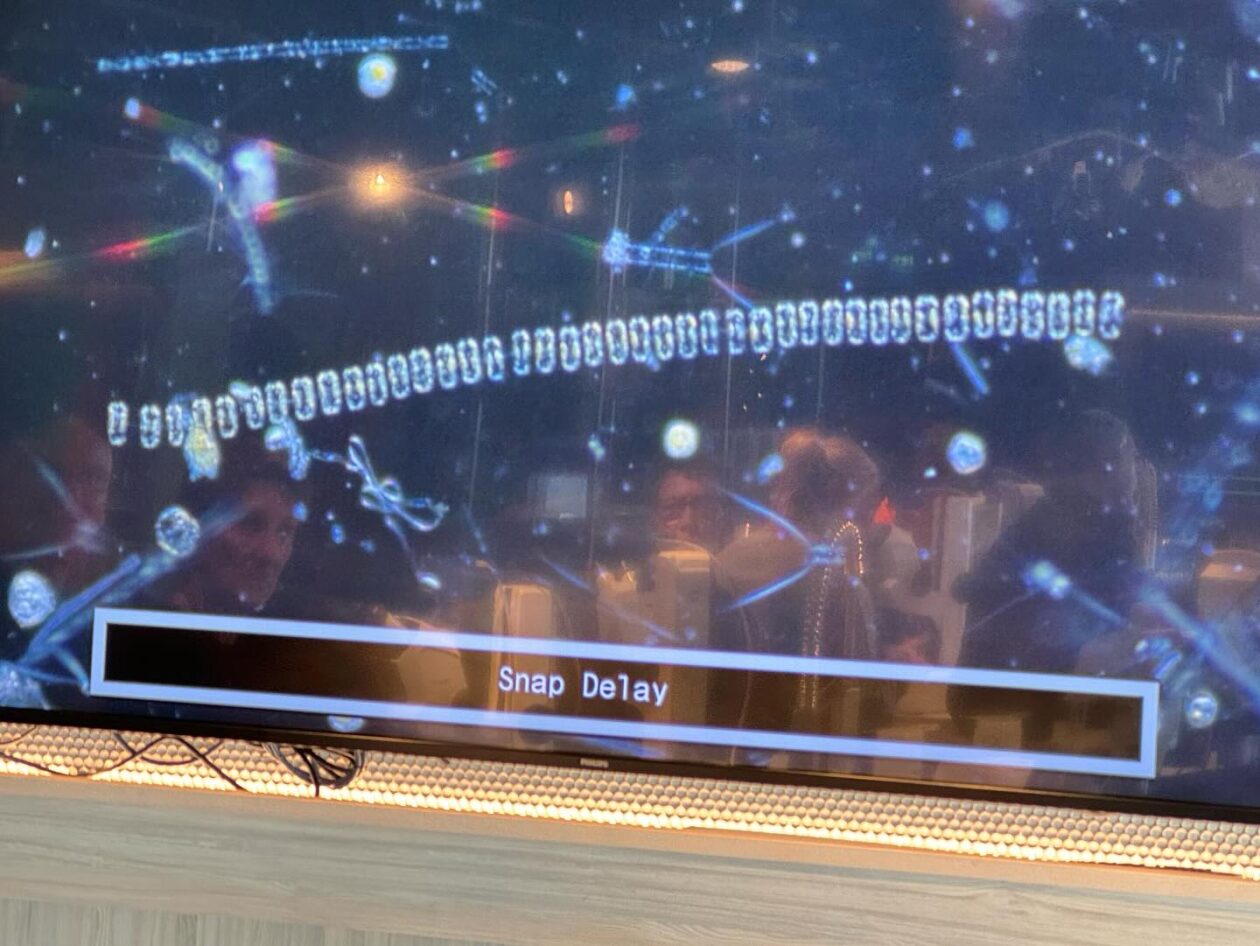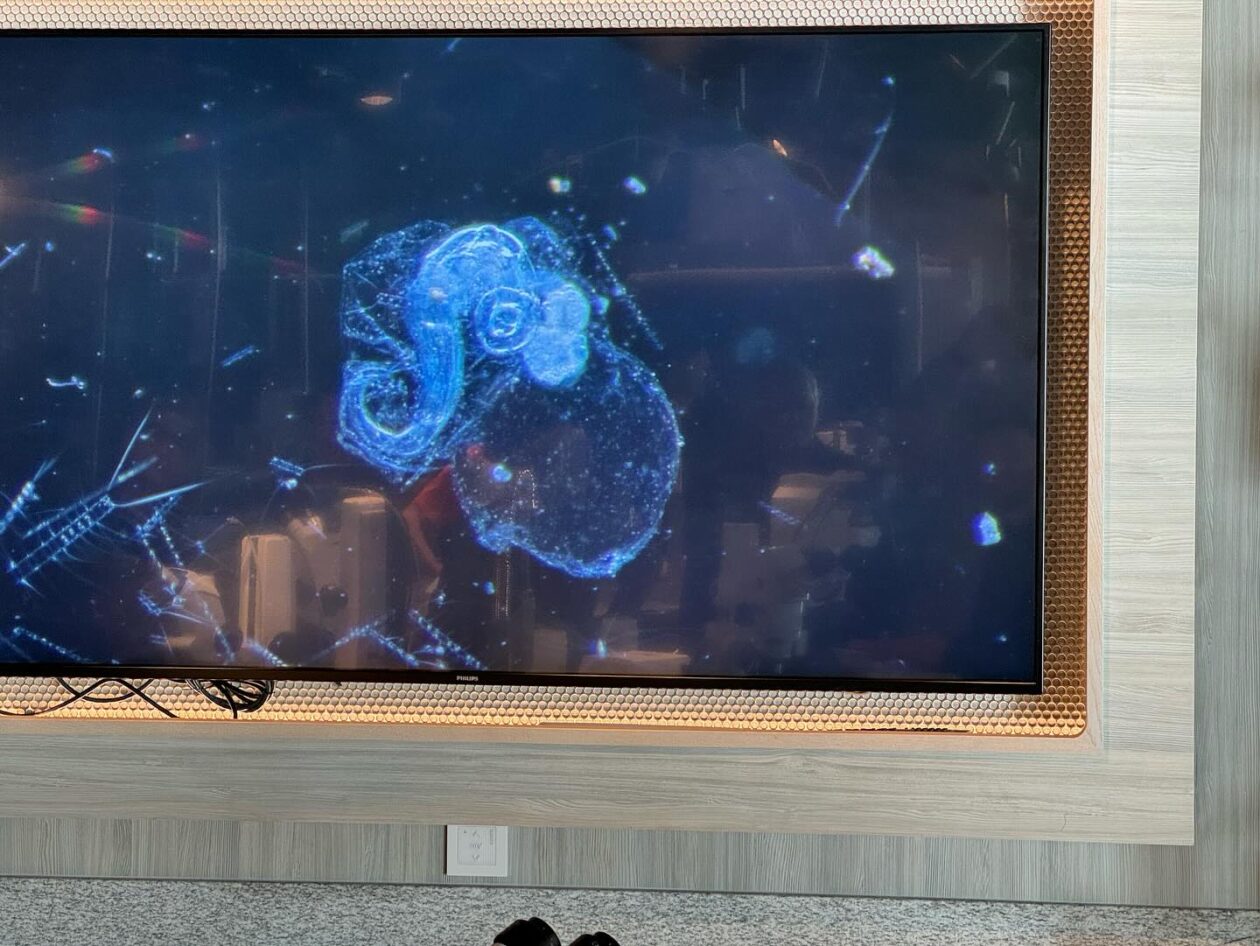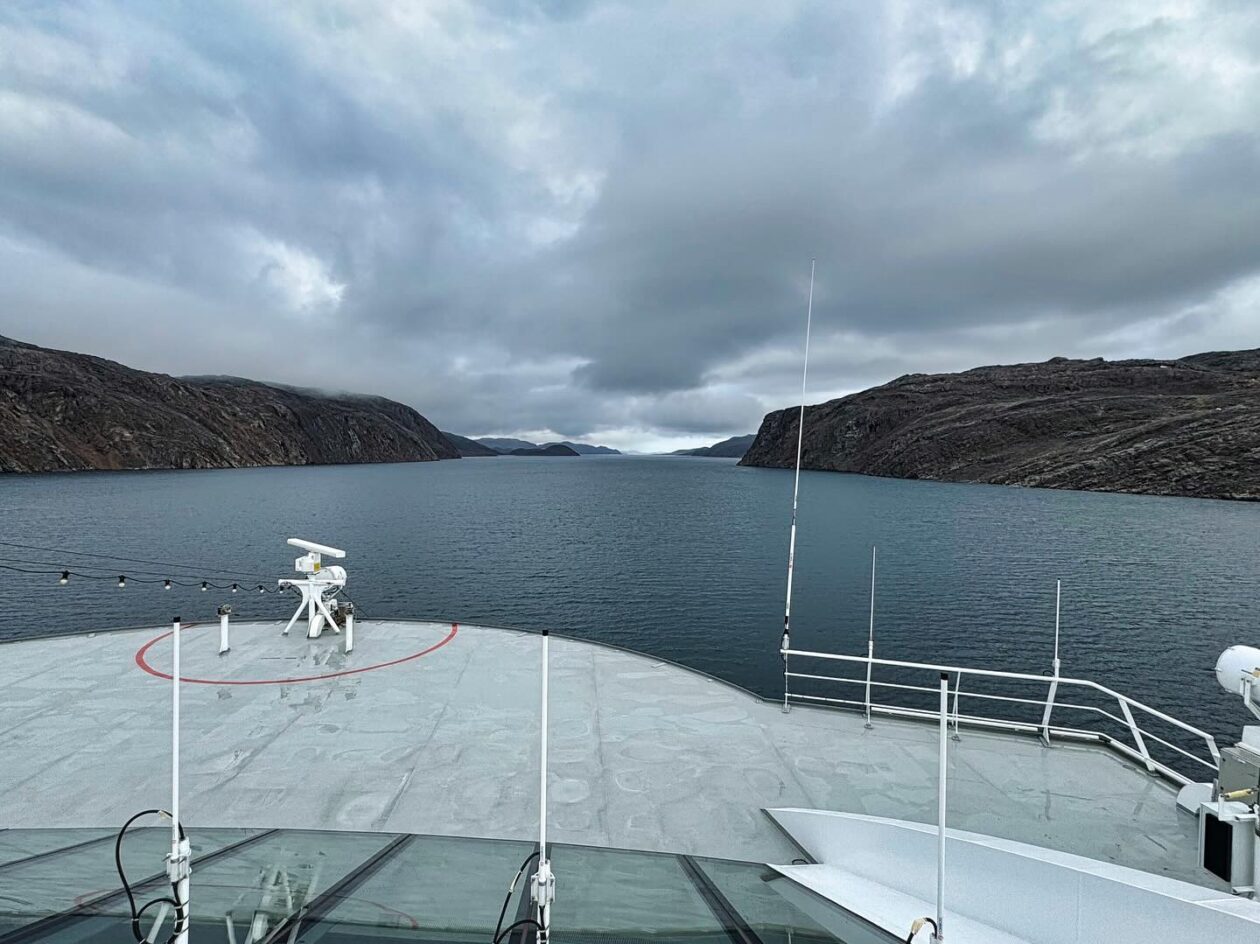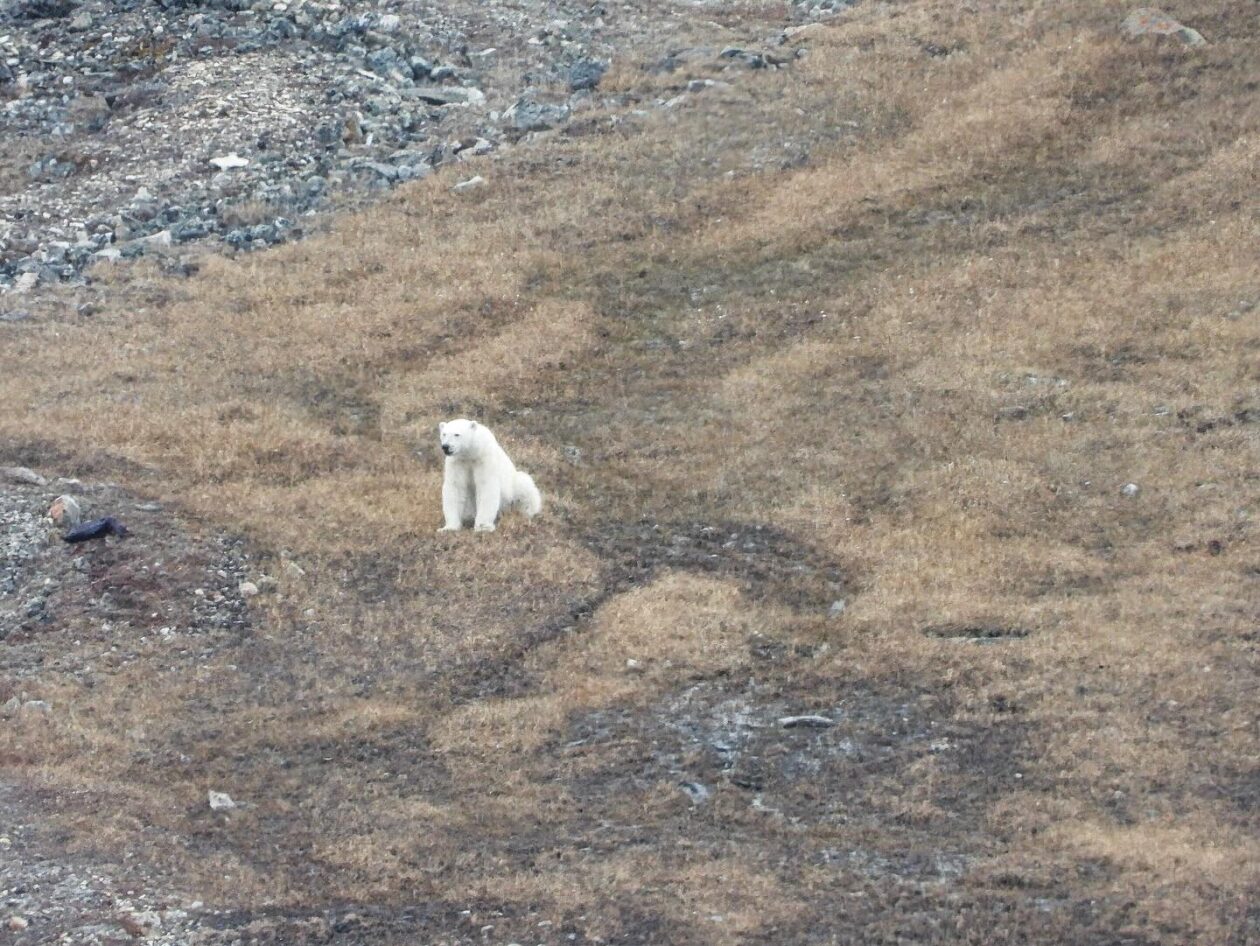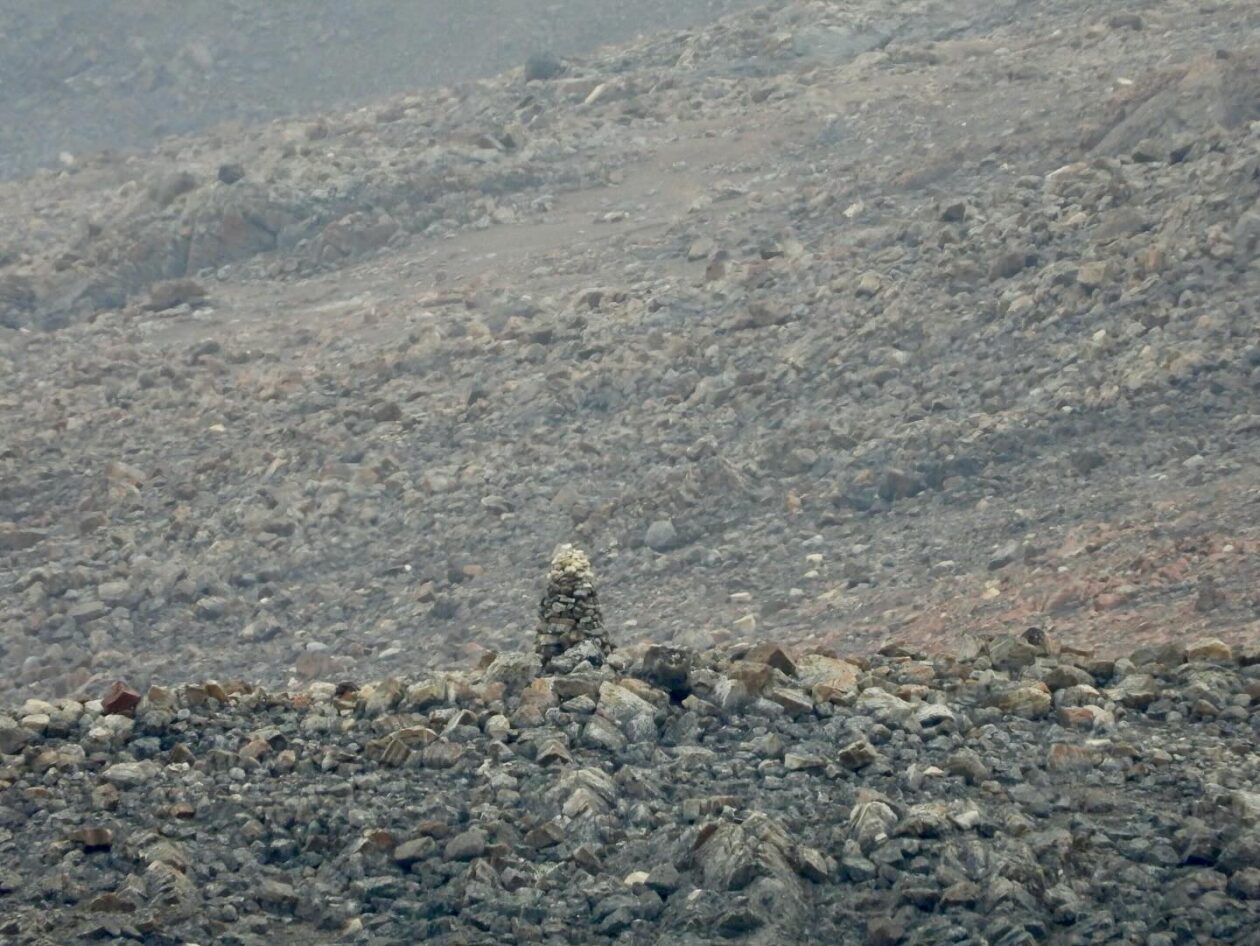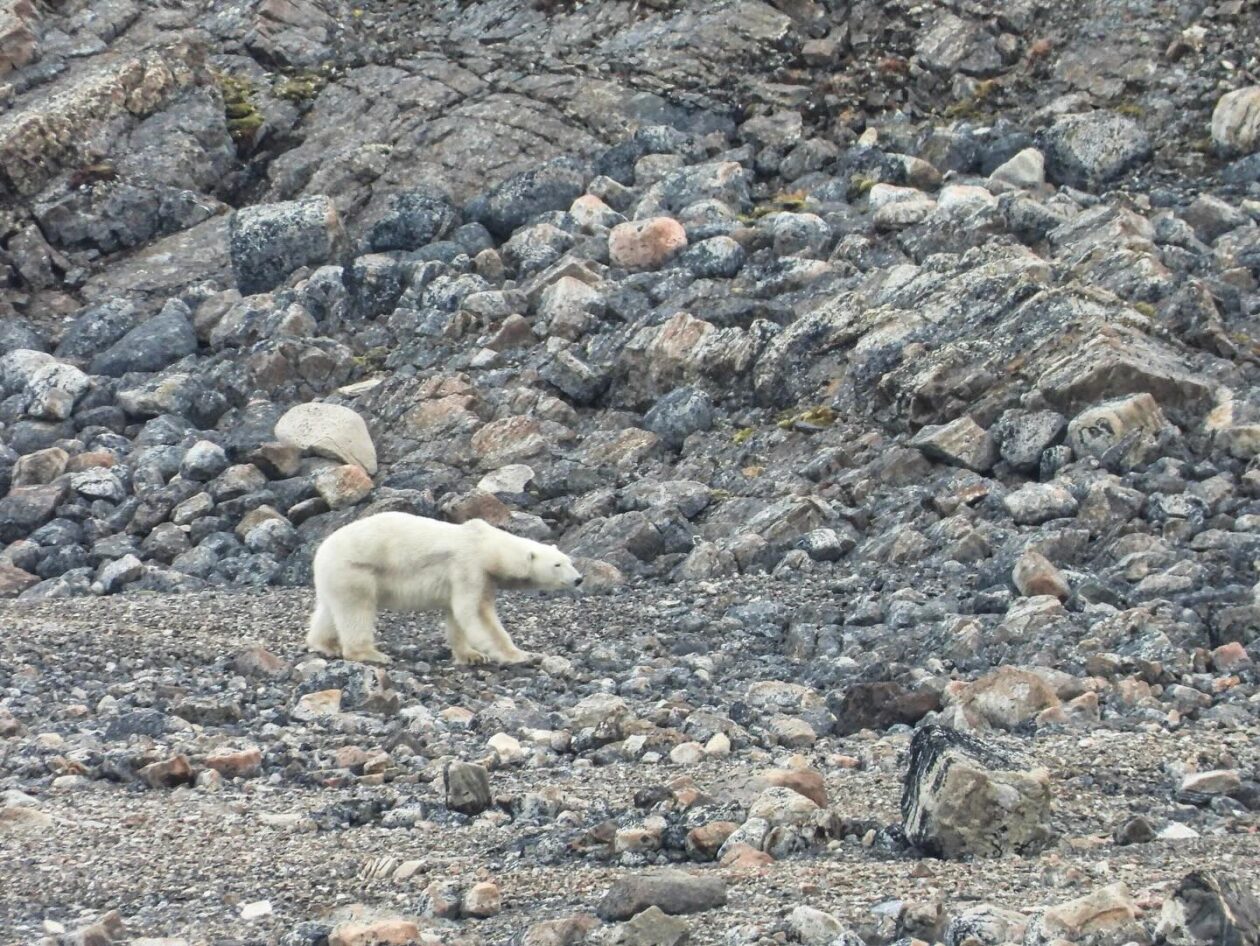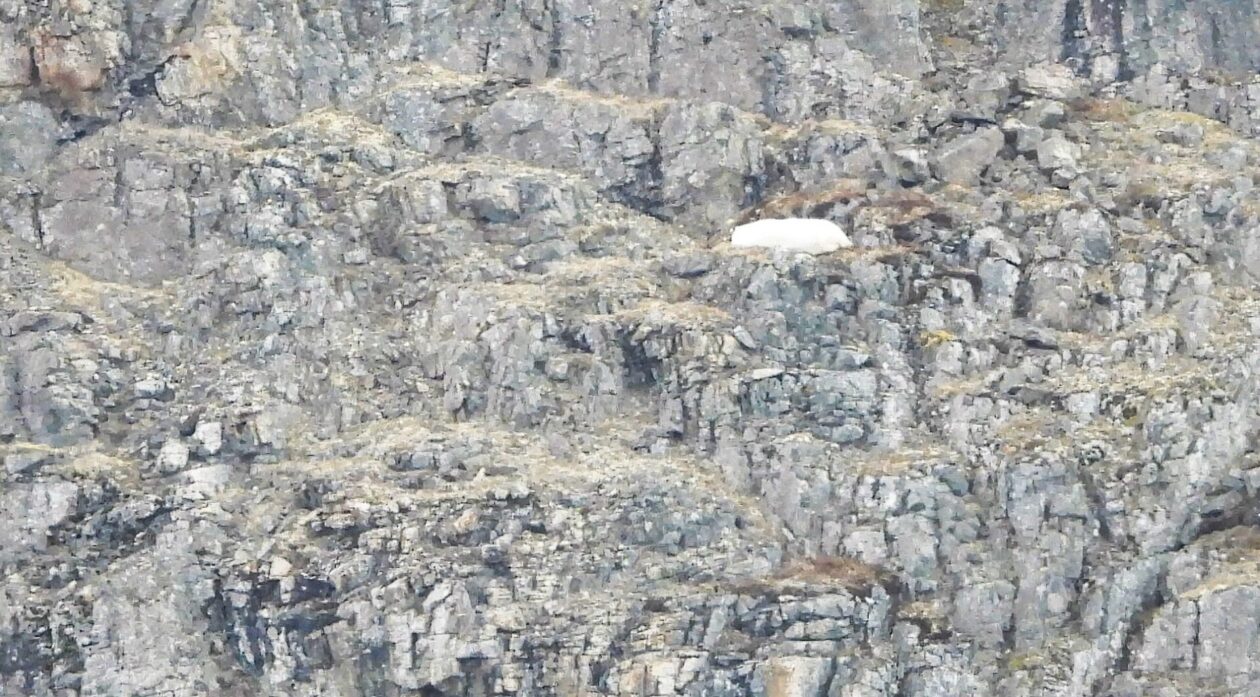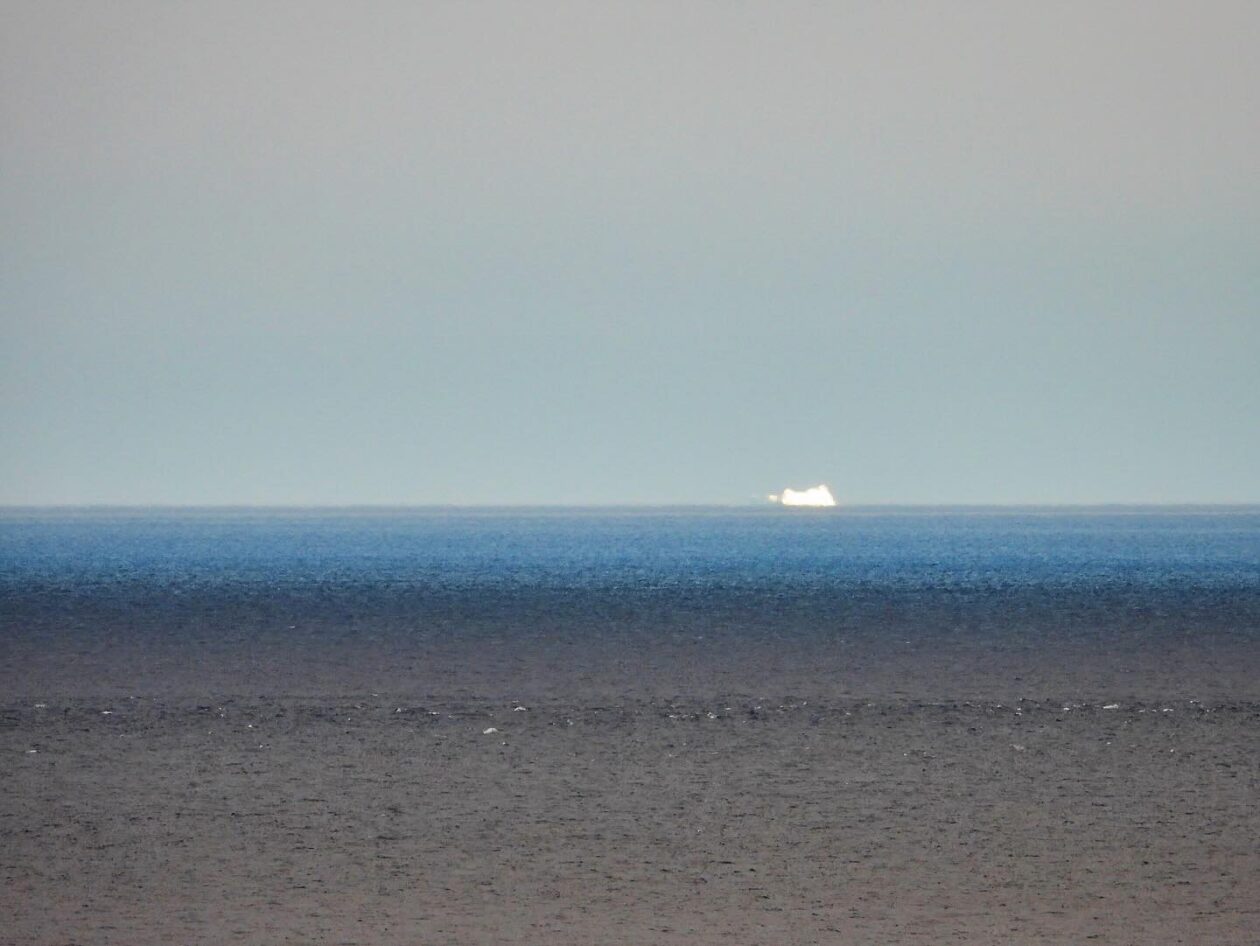- Start of trip and Nome, AL
- Herschel Island, Yukon, Canada
- Sea Day, a surprise, and the Smoking Hills, Northwest Territories, Canada
- Ulukhaktok, Northern Territories, Canada
- Murray Island, Nunavut, Northern Canada, Canada
- Cambridge Bay, Nunavut, Northern Canada
- Citizen science and Borge Island
- Gjoa Haven, Nunavut, Northern Canada
- A busy day at sea — polar bears, musk ox, and plankton, oh my!
- Prince Leopold Island, Beechey Island, and Radstock Bay, Nunavut, Northern Canada
- Croker Bay and Dundas Harbor, Nunavut, Northern Canada
- Pond Inlet and the Inuit, Nunavut, Northern Canada
- Ilulissat, Greenland
- Sisimiut, Greenland
- Red Bay, Labrador, Canada
- Corner Brook, Newfoundland, Canada and end of trip
Sea days provide an opportunity to learn through lectures, create art of different media, and perhaps help conduct some experiments. In the Science Lab today, we got to look at the water samples we had collected two days earlier to see what we had. We used eyedroppers to draw drops from various depths of the collection jar as zooplankton can “swim” and phytoplankton just float. We saw at least two zooplankton (including an adult copepod and nauplius) and a whole bunch of phytoplankton (including diatoms, dinoflagellates, and others). I’ve sculpted some of these guys in the past so it was fun to see them up close and personal! There was one that nobody could identify. I thought it looked like the side view of a marine muskox… Fun!
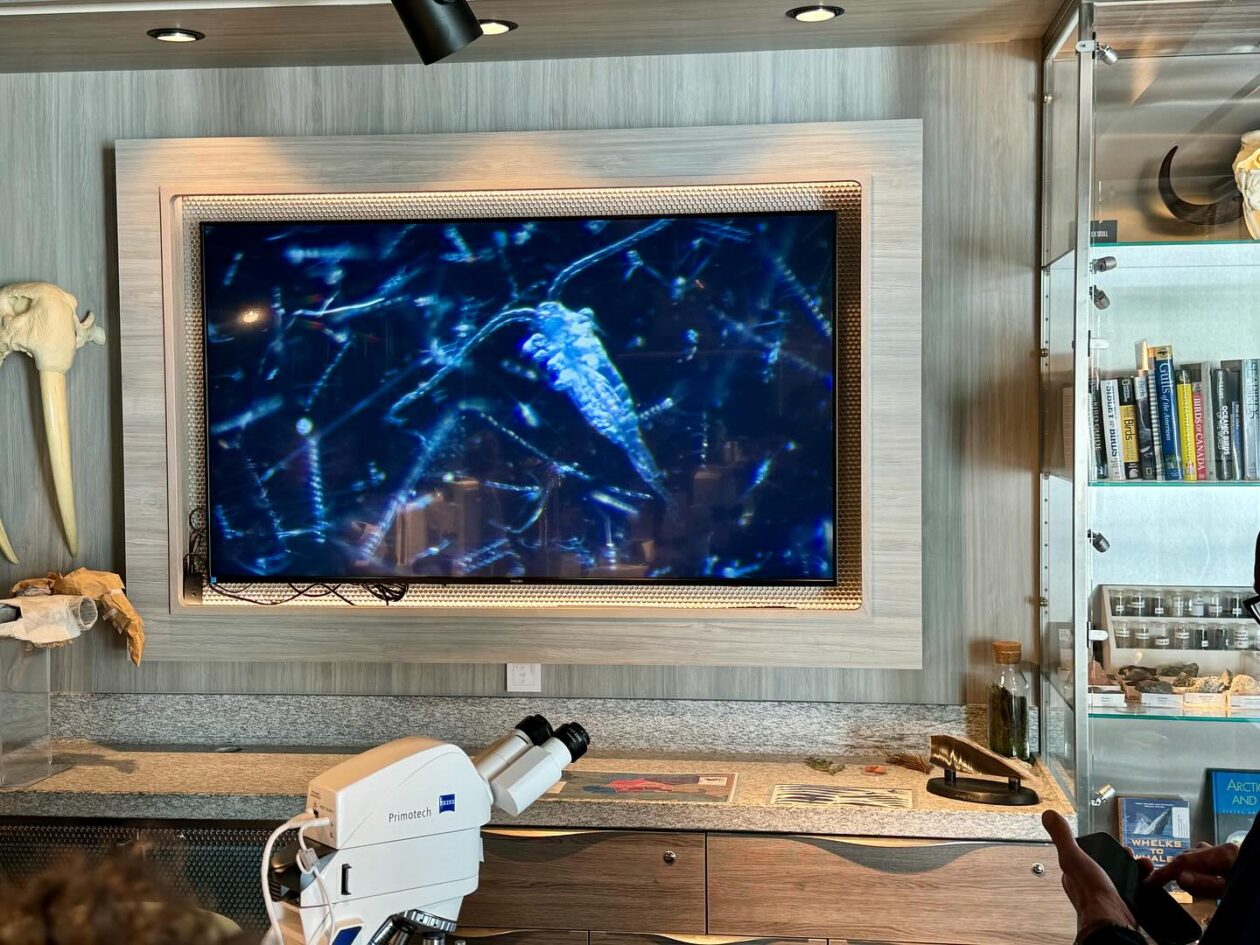

During the afternoon, we transited the Bellot Strait, a passage of water in Nunavut separating Somerset Island on the north from the Boothia Peninsula on the south. It was named after Frenchman Joseph Bellot, one of the adventurers who went to search for the doomed Franklin expedition. There is a common misconception that there is only one route through the Canadian Arctic that defines the Northwest Passage. Actually there are at least seven main routes through this array of islands, peninsulas, and straits. Different routes were followed by different explorers, often depending on sea ice. Taking the Bellot Passage avoids having to take the longer route around Somerset Island before having another opportunity to head eastward. Having said that, this is the narrowest strait through the Northwest Passage — less than a half mile in some parts. Luckily, we didn’t have any ice to contend with given the swirling currents in the strait. Part of the way through, we passed Murchison Promontory on Boothia Peninsula which is the northernmost point of the North American mainland. We were all excited to go through the strait as it would provide an opportunity to look for polar bears and musk ox. Sometimes it was easy (e.g., a white polar bear against a dark background) and sometimes difficult (e.g., a dark musk ox against a dark background). All told, we saw three polar bears (I didn’t realize one of them was actually a sleeping bear at first — I thought it was a chunk of snow!) and one musk ox. The polar bears looked pretty thin and the naturalist said that without sufficient ice, there weren’t enough opportunities to hunt seals and hunting birds doesn’t yield enough energy. He felt the particularly skinny bear wouldn’t survive until next year. Very sad.
